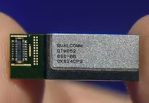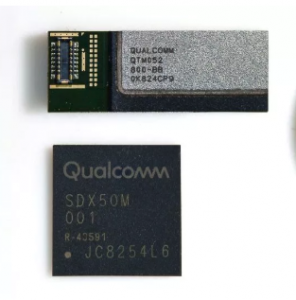
Qualcomm reveals World’s first miniature 5G antenna for smartphones

Qualcomm reveals world’s first millimeter Wave antenna and for 5G and sun-6Ghz smartphones.
Qualcomm is debuting two critically important new “modem-to-antenna” components the world’s first fully integrated mobile device-ready 5G millimeter wave (mmWave) antenna modules and sub-6 GHz RF modules. These parts will enable even smartphones to connect to upcoming 5GmmWave networks, an engineering feat that was once considered impossible.
Qualcomm’s QTM052mmWave antenna modules and QPM56xx sub-6 GHz RF modules are each designed to work with Qualcomm’s Snapdragon X50 5G modem, addressing different radio frequencies. The mmWave antenna can be used on 26.5-29.5GHz, or 37-40GHz bands, while the sub-6 GHz RF module works on 3.3-4.2 GHz, 3.3-3.8GHz or 4.4-5.0GHz bands. Each country’s regulators are currently in the process of determining which mmWave and Sub-6 GHz bands will be used for 5G services within their borders.
Qualcomm’s miniaturised mmWave antenna and X50 modems to achieve ultra-fast 5G Speeds will revolutionise the mobile experience. To deliver high throughput in dense urban areas and crowded indoor environments QTM052 supports up to 800NHz of bandwidth, using advanced beam forming, beam steering and beam tracking technologies to improve mmWave signalling.
The module also includes a 5G radio transceiver, power management IC, RF front-end, and phased Antenna array, working with the Snapdragon X50 modem as a complete system. Up to four QTM052 modules can be strategically placed in a single smartphone to improve the device’s resistance to signal attenuation and other interference. The sub-6 GHz module family including QPM5650, QPM5651, QDM5650 and QDM5652 will enable devices to access 5G networks in less densely populated non-urban areas. All four modules support the same sub06GHz bands and the P versions contain power amplifiers and the D versions offer diversity support, but all are designed to support massive MIMO transmissions which use multiple antennas to achieve high data rates.
